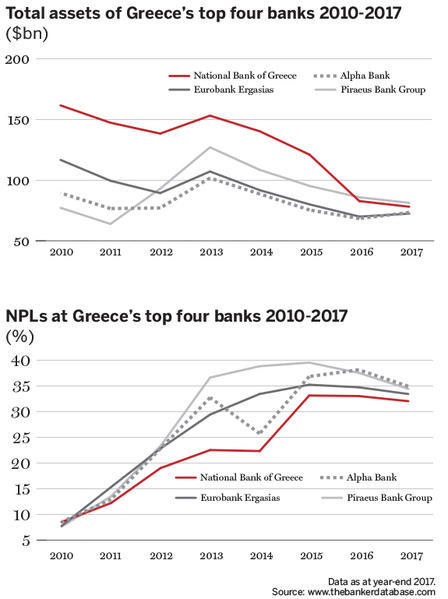Exiting the eurozone’s rescue programme does not mean that Greece is out of the woods quite yet: the banks must still deal with their damaged balance sheets. Joy Macknight reports.
Greece has emerged on the other side of the European Stability Mechanism’s three-year emergency programme, after receiving €61.9bn ($71.4bn) in support of “macroeconomic adjustment” and bank recapitalisation. While this means that Greece can borrow at market rates for the first time in eight years, the nightmare is not yet over for the Mediterranean country’s banking sector.
Since the Greek tragedy began to unfold in 2010, the country’s four largest banks by Tier 1 capital – Alpha Bank, Piraeus Bank, Eurobank Ergasias and National Bank of Greece (NBG) – have had almost a third wiped off their aggregate balance sheet in dollar terms. In one of the more dramatic declines, NBG went from $161bn in assets in 2010 to $78bn in 2017.
The aggregate profits of the four banks plunged by more than 200%, while the ratio change in non-performing loans across the eight years has skyrocketed by over 2000 basis points, from an average of 8% to over 30% of their loan books.
Tier 1 capital across the four banks, on the other hand, has increased by almost 17% – a bright spot among the clouds.
All data sourced from www.thebankerdatabase.com.



